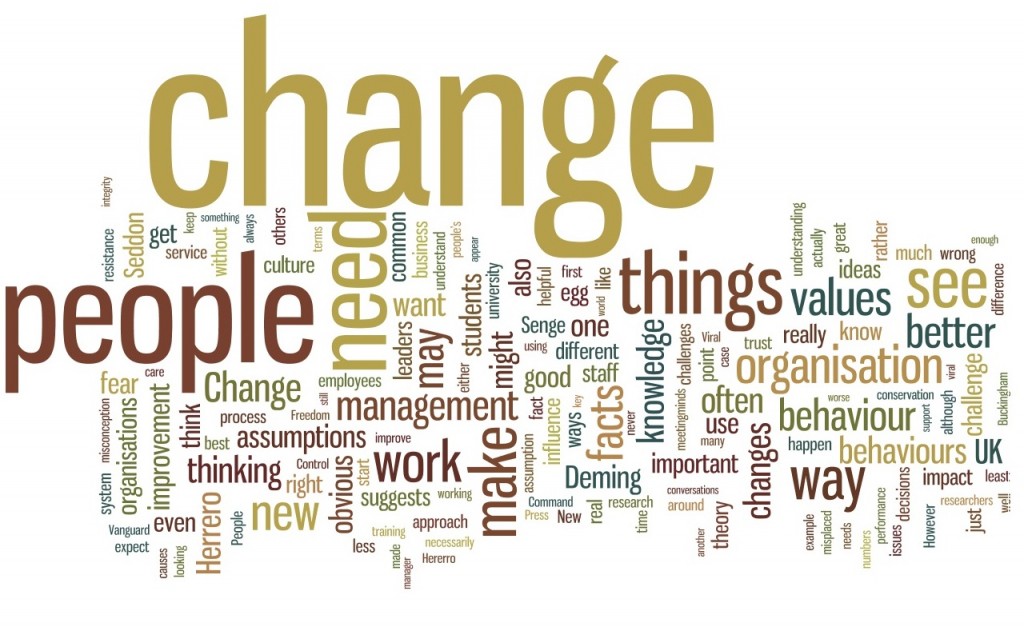By Cindy Vallance
In his most recent blog, Simon Black posted a wordle that highlighted topics from his recent blogs as part of the Change Academy initiative. Change, people, values and behaviours all feature heavily. I thought this was a great idea so decided I would do the same. Here is my own completely unedited blog wordle:

Not surprisingly, given my recent blogs, trust features predominantly. Also included is an emphasis on creating a thinking environment. The big question in my mind is what we can now accomplish if we have so far managed to build a foundation of trust based on thinking with others.
Our group is meeting this week to discuss our activities since first coming together last autumn and to consider where to focus our energies in the coming year. To date, it has been very much about embedding an ethos of collaboration – consciously working to increase partnerships between students, academic staff and professional services staff in everything we are already doing. After we meet, I will report back to share some further detail about what we have done and what we are hoping to do.
One thing we have discussed is how we should try and get the word out about this way of working that takes into account a wide diversity of perspectives and provides equal opportunities for all to express their views.
If you have enjoyed reading these blogs over the past few months and following our twitter link @cdvallance, then spread the word and share these links with your colleagues – both staff and students. Perhaps also think about commenting within the blogs since we do want these to be a forum for discussion as well as self reflection.
And check back to hear our plans; we want to hear from you on these as well.

